| The Early Inter-War Years |
|
Production of civilian vehicles restarted
in 1919, during a difficult time for the industry. At the end of
the war all military contracts had been cancelled, and the Army
Disposal Board sold large numbers of ex-military vehicles at
extremely low prices. They flooded the market, and made it
almost impossible to sell new products. Many vehicle
manufacturers, including Guy Motors found it difficult to
survive.
The company continued to be innovative,
launching the Guy 8-cylinder car, powered by the first British
V8 engine, with inclined valves, and inclined, detachable
cylinder heads. Around 150 Guy cars were produced between 1919
and 1925, when production ended. |

A Guy car and lorry outside the factory.
|
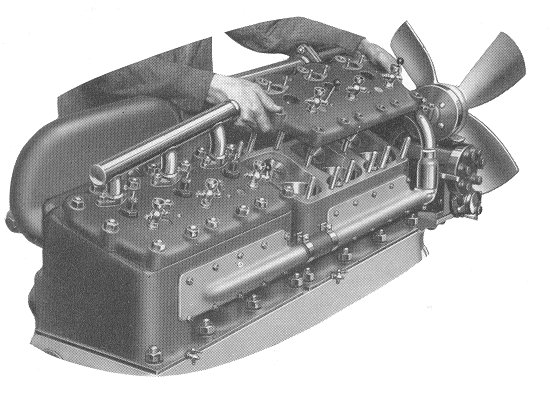
A Guy engine with detachable cylinder
heads. |
The commercial vehicle engines were equally advanced. At the
time most engines were fitted with side valves and fixed
cylinder heads, whereas Guy engines had inclined valves, and
inclined, detachable cylinder heads. Advantages included
increased accessibility, superior running efficiency, and longer
life.
The efficiency of the engine was at least equal to any
contemporary overhead valve type. |
| The detachable cylinder heads could be
removed in a matter of minutes. |
 |
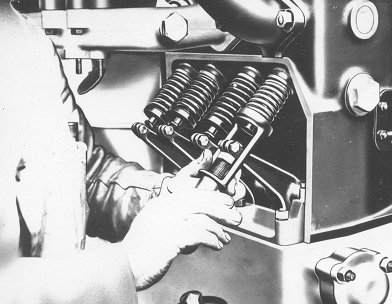 |
The design allowed extreme
accessibility to the valves. |
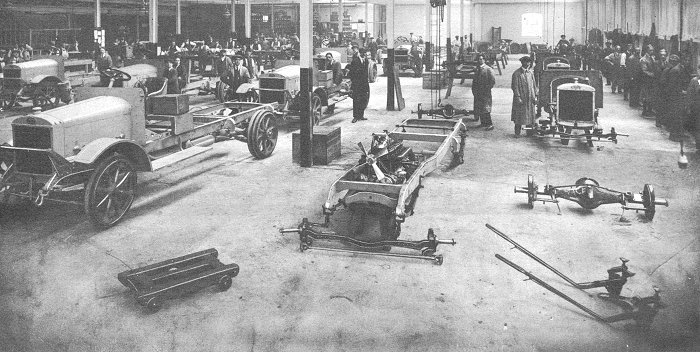
The vehicle assembly shop.
| Production of the 30 cwt. chassis continued in a range of
models including the Guy Charabanc, a 14-seater with a
4-cylinder engine, 4-speed plus reverse gearbox, cone clutch,
double reduction rear axle, and pressed steel frame. It was also
fitted with carbide lamps. |
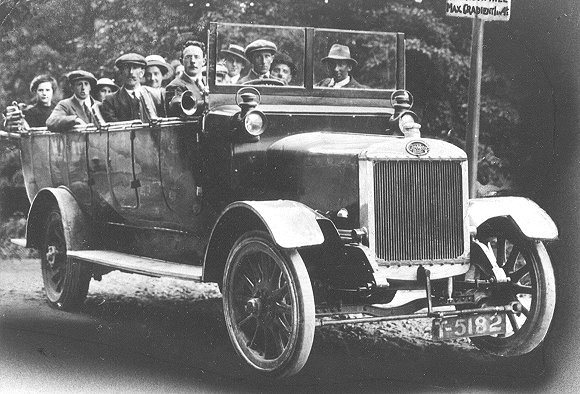
The Guy Charabanc.
|
|
|
Read about Guy 30 cwt.
vehicles |
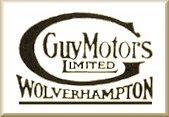 |
| |
|
|
In 1920 experiments were carried out with
the Holden pneumatic suspension system, in an attempt to improve
passenger comfort. The idea was abandoned with the introduction
of Dunlop and Goodyear pneumatic truck tyres.
During the same year the company launched a
2½ ton commercial chassis in time for the first post-war
Commercial Motor Show at Olympia in October.
Another innovation was the introduction of
the first roadless farmer’s vehicle, which had SPUD wheels. This
type of wheel became widely used on farm tractors. |
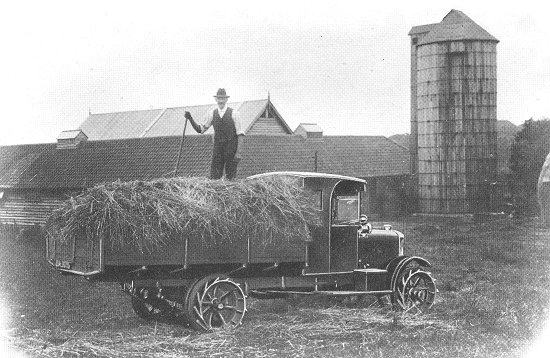
The Guy roadless farmer’s vehicle.
| A SPUD wheel. |
 |
| In 1921 Guy produced a 30-seater bus, based on the
successful 30 cwt. chassis, with the governor removed. The
vehicle became very successful, and large numbers were produced. |
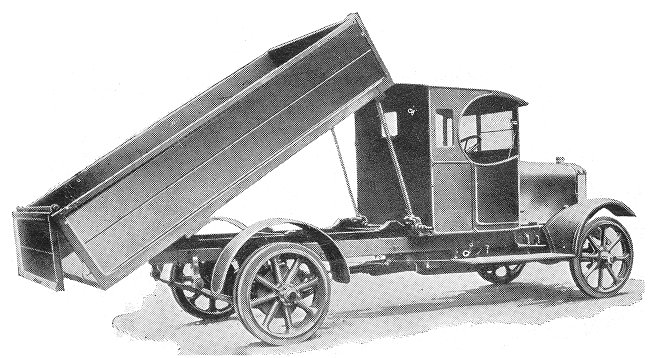
A Guy 2½ ton
tipper.
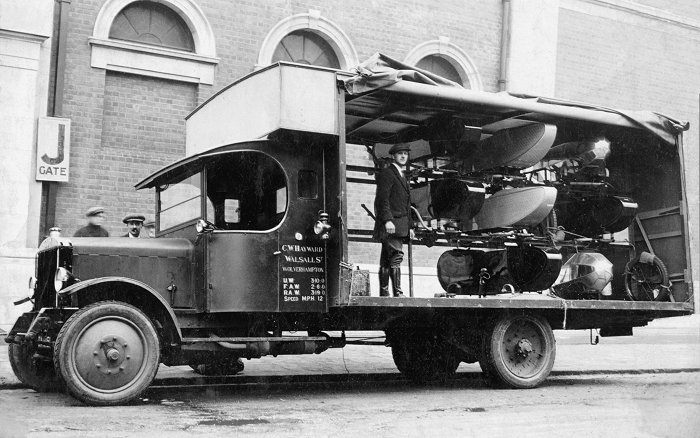
A Guy lorry, loaded with sidecars,
produced at the A.J.S. factory in Lower Walsall Street, by
Charles Hayward, who is possibly standing inside. Courtesy of
David Clare. |
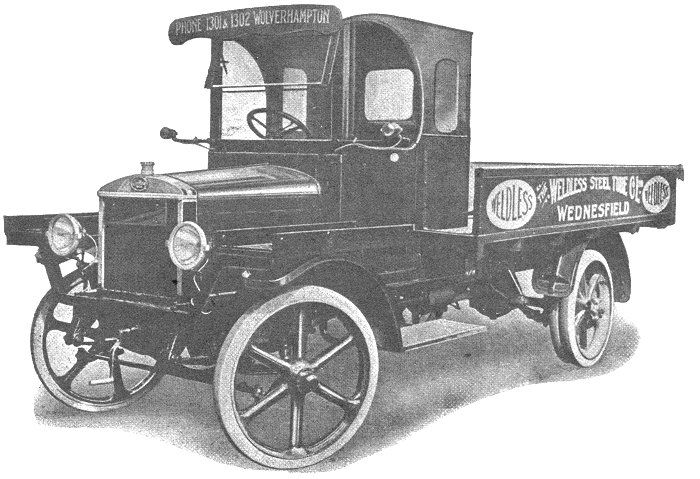
A 30 cwt. lorry.
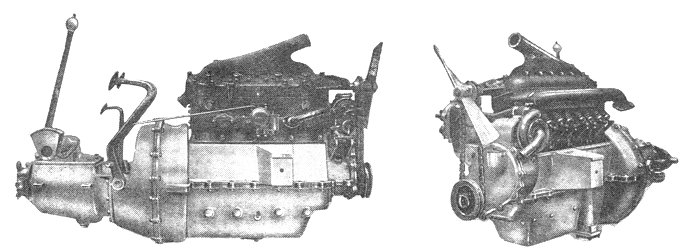
The engine that powers the 30 cwt. lorry
above.

A 2½ ton
truck from about 1920, still in use in New Zealand in 1955.
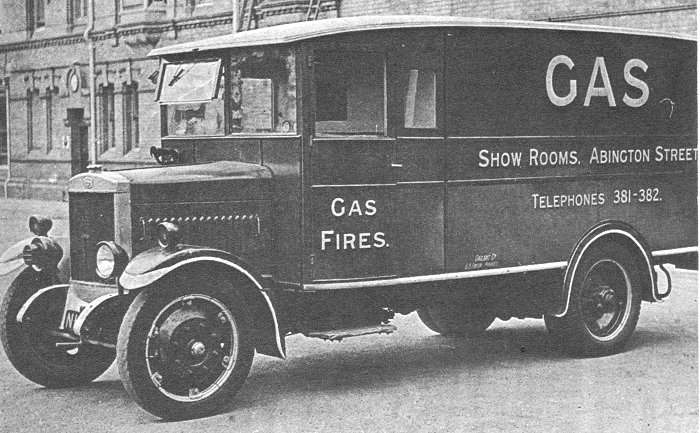
A Guy van from 1927.
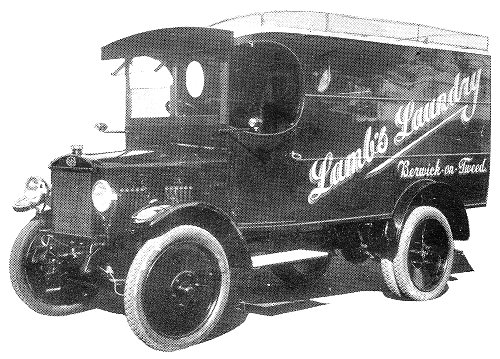 |
A Guy 25 cwt. box van. |
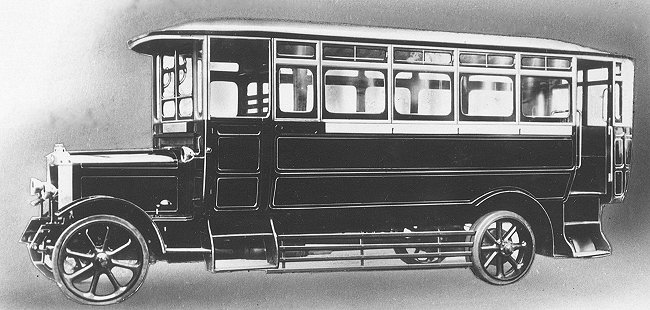
A Guy 30-seater bus.

Courtesy of Brendan Kinsella.
| In 1922 Guy introduced an articulated 6-wheeled vehicle
suitable for carrying heavy loads. The articulated design was
extremely successful, and has become a common sight on the
roads. It can be seen today in numerous forms, produced by many
manufacturers. |
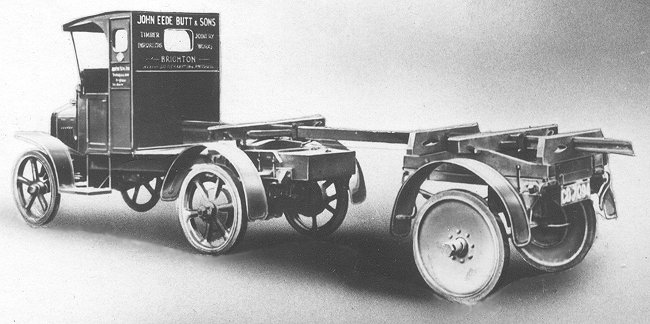
The Guy articulated 6-wheeled vehicle.
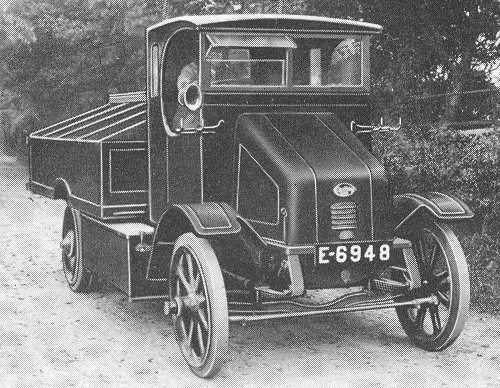 |
In the same year a 2½ to 3 ton
electric battery vehicle was developed for refuse
collection, with a side-tipping, wooden back.
|
| 1922 also saw the development of the Guy Promenade Runabout,
based on a special version of the ‘J’ chassis. It had small
wheels and a low floor to provide easy access for passengers.
The vehicle, first supplied to Bournemouth, was also used at
many other seaside resorts including Portsmouth. |

The Guy Promenade Runabout.
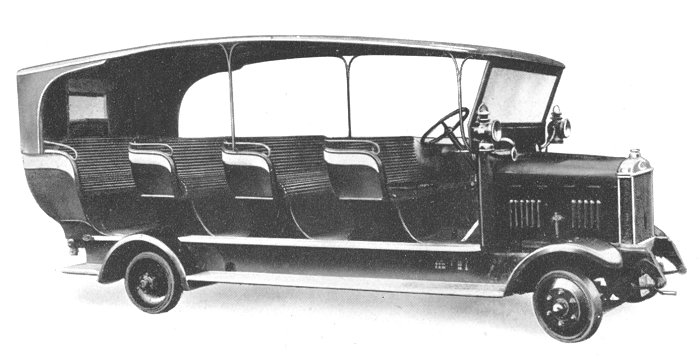
Another view of the Guy Promenade Runabout.
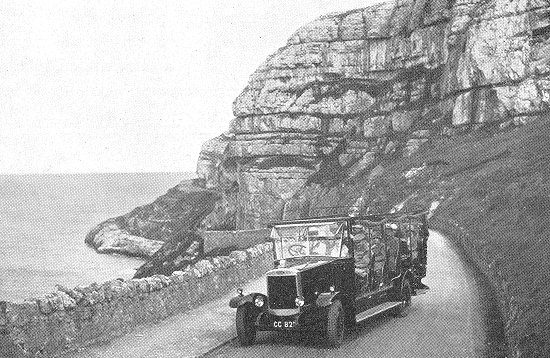
Another view of a Guy Promenade Runabout.
| In 1923 Guy developed a road-rail vehicle for South African
Railways. It had a detachable bogie at the front, which could be
removed for road use, and large wheels at the back which ran
outside the track.
The vehicle had twin engines, driving a single propeller
shaft through a special gearbox. On the railway it was used for
hauling and shunting wagons. |
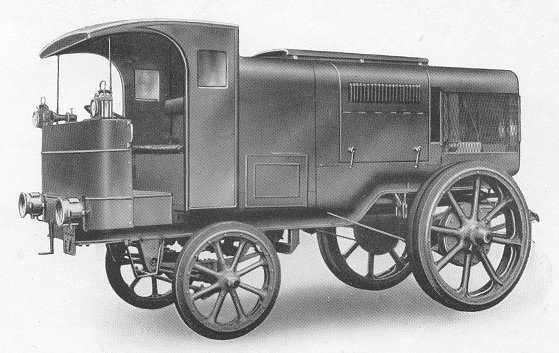
The Guy road-rail vehicle. |
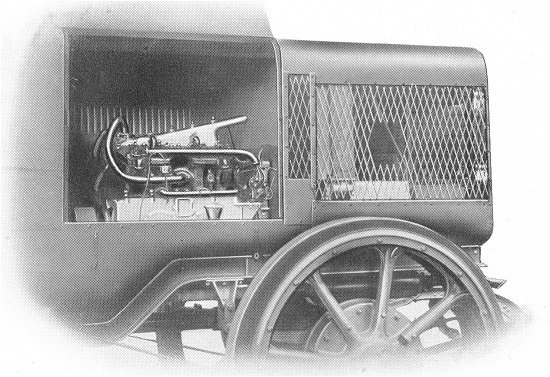 |
The engine compartment in the
road-rail vehicle. |
| Guy began to build military vehicles in 1923 under a government subsidy.
The first vehicles were 30 cwt. and 2½ ton
trucks with pneumatic tyres. |
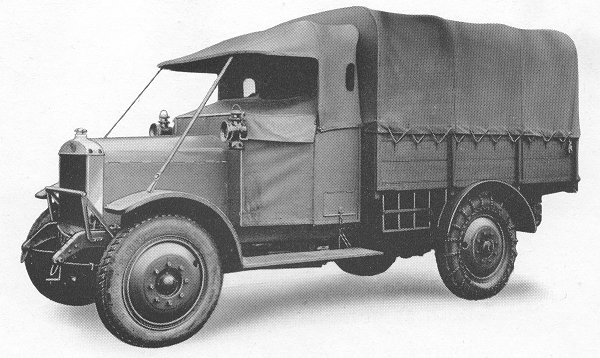
A Guy military truck.
| |
|
| View some Guy adverts from the
1920s |
 |
| |
|
| The Guy slogan "Feathers In Our Cap" became well known
thanks to the Red Indian mascot that was fitted to almost every
vehicle. It all started with an advert on January 22nd, 1924
which pointed out some of the many repeat orders received at the
works. The feathers in the advert reminded people of a Red Indian
head dress, and so the mascot eventually appeared. The slogan was always, and will always be associated with Guy
Motors. |
|
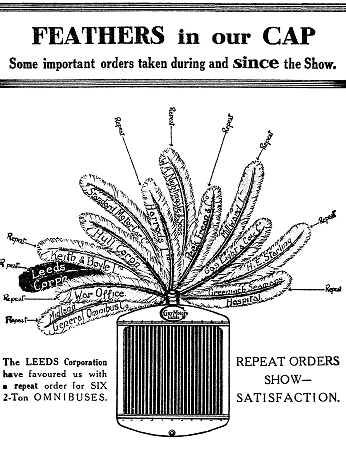
The original advert. |
|
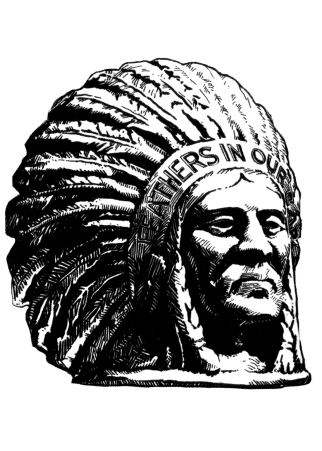
The Guy mascot. |
| |

An advert from 1935. |
|

An advert from 1922. |
| In 1924 Guy developed a vehicle with caterpillar
tracks instead of rear wheels. The caterpillar tracks provided
considerable adhesion, allowing the vehicle go almost anywhere.
They were supplied to the Admiralty, the War Office, and Crown
Agents for the colonies.
Unfortunately they had a short life because mud and grit
caused excessive wear on the track joints. |
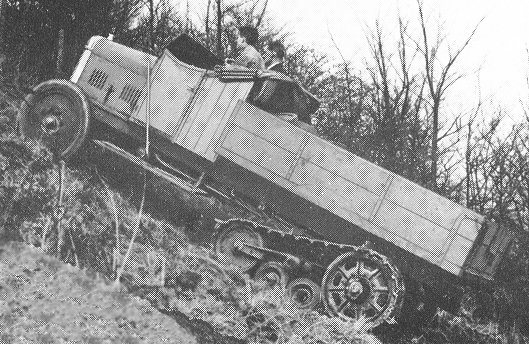
A Guy lorry with rear caterpillar tracks,
on test. |
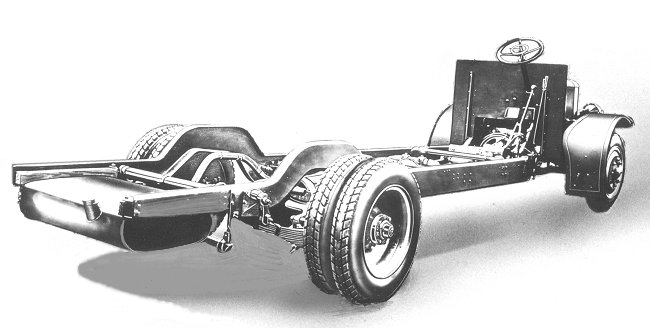
The Guy low-loading drop-frame chassis,
developed in 1924, greatly changed bus design. It improved passenger accessibility, lowered the centre of gravity, and
made the vehicle easier to handle. |
| A Guy fire engine was exhibited at the 1924 Motor Show
following a joint-project by Guy Motors and John Morris of
Manchester. Guy supplied a ‘J’ type chassis as the basis of
the machine, which was bodied and fitted-out in Manchester. |

The Guy fire engine at the Black Country
Living Museum. |
| The vehicle spent its working life at Cheddleton Paper
Mills, before going into preservation. It can be seen today at
the Black Country Living Museum, in Dudley. In the early 1920s
a well-equipped body shop opened at the works, producing all
kinds of bodies for commercial vehicles. By 1924 complete
vehicles were supplied to many of the most important operators
in the country.
Some examples of the many types of vehicles produced: |
 |
A Guy lorry. |
| A travelling showroom. |
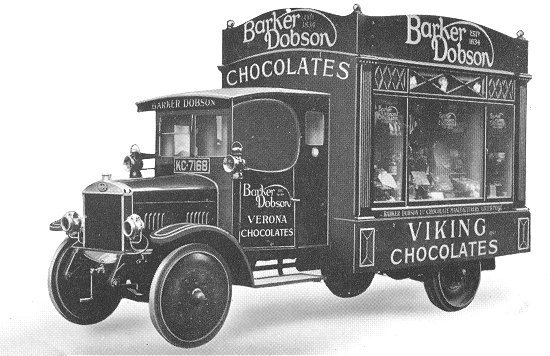 |
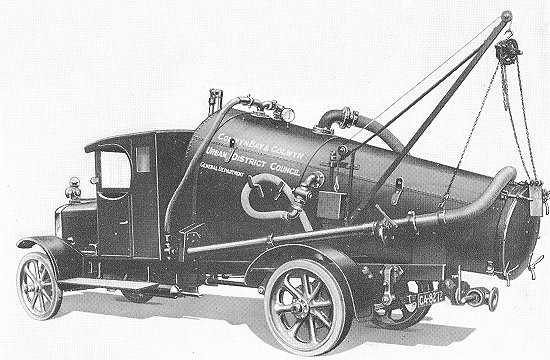 |
A gully emptier. |
| A farmer's vehicle with a moveable
upper deck. |
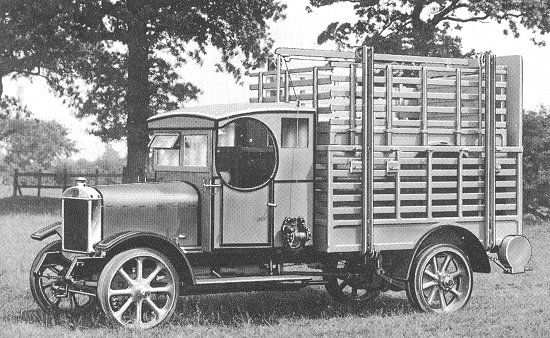 |
 |
A Guy horse box. |
| One of Harrods' fleet of Guy vans. |
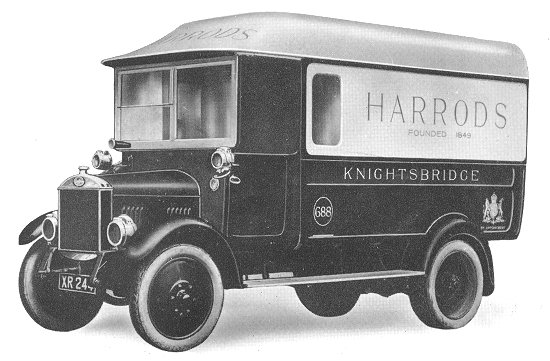 |
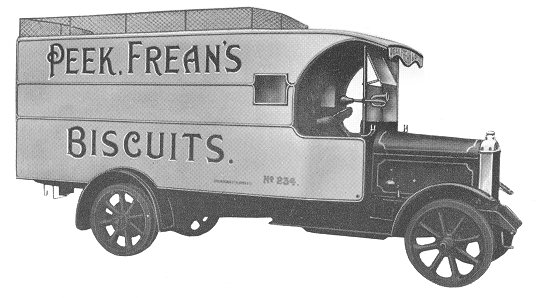 |
A 2½ ton
Guy van. |
 |
|
 |
|
 |
Return to
The Early Years |
|
Return
to the
beginning |
|
Proceed to
The Late 1920s |
|